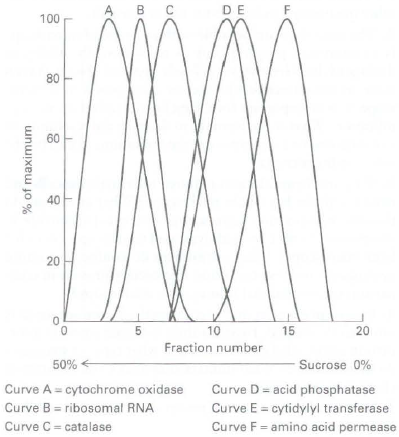Mouse liver cells were homogenized and the homogenate subjected to equilibrium density-gradient centrifugation with sucrose gradients. Fractions
Question:

a. Name the marker molecule and give the number of the fraction that is most enriched for each of the following cell components: lysosomes; peroxisomes; mitochondria; plasma membrane; rough endoplasmic reticulum; smooth endoplasmic reticulum.
b. Is the rough endoplasmic reticulum more or less dense than the smooth endoplasmic reticulum? Why?
c. Describe an alternative approach by which you could identify which fraction was enriched for which organelle.
d. How would addition of a detergent to the homogenate, which disrupts membranes by solubilizing their lipid and protein components, affect the equilibrium density-gradient results?
Step by Step Answer:

Molecular Cell Biology
ISBN: 978-1429234139
7th edition
Authors: Harvey Lodish, Arnold Berk, Chris A. Kaiser, Monty Krieger, Anthony Bretscher, Hidde Ploegh, Angelika Amon, Matthew P. Scott





